Meet The Anthurium
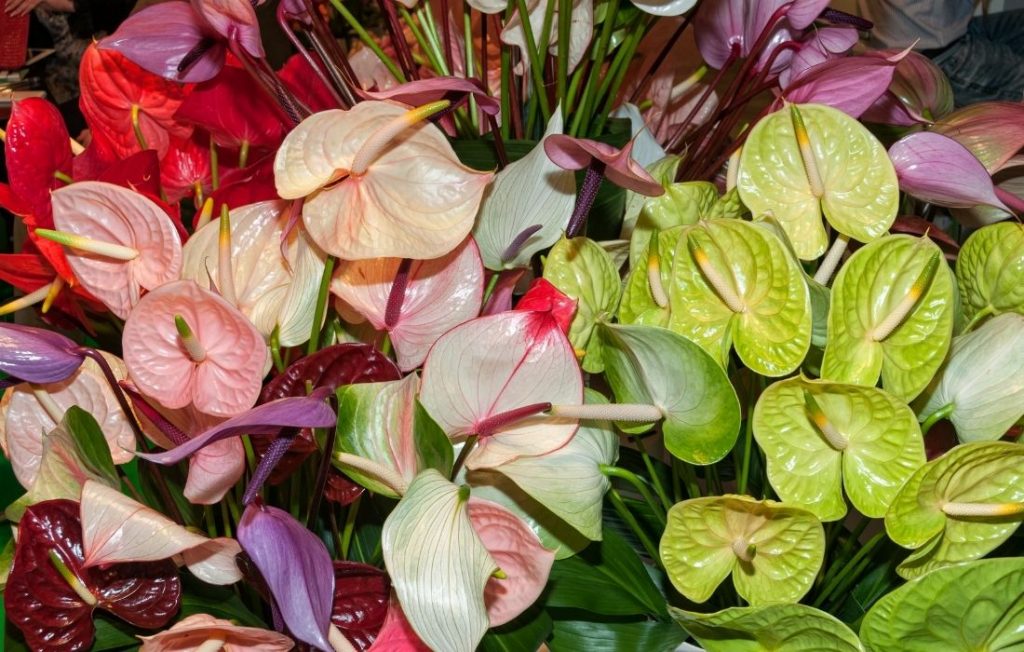
Anthuriums are a beloved choice for indoor plant enthusiasts, celebrated for their vibrant blooms and unique foliage. If you’re seeking a colorful, bright plant to enhance your living space year-round, anthuriums are an excellent option. This guide will provide you with everything you need to know about Anthurium care, ensuring your plant thrives and becomes a stunning focal point in your home.
Introduction to Anthuriums
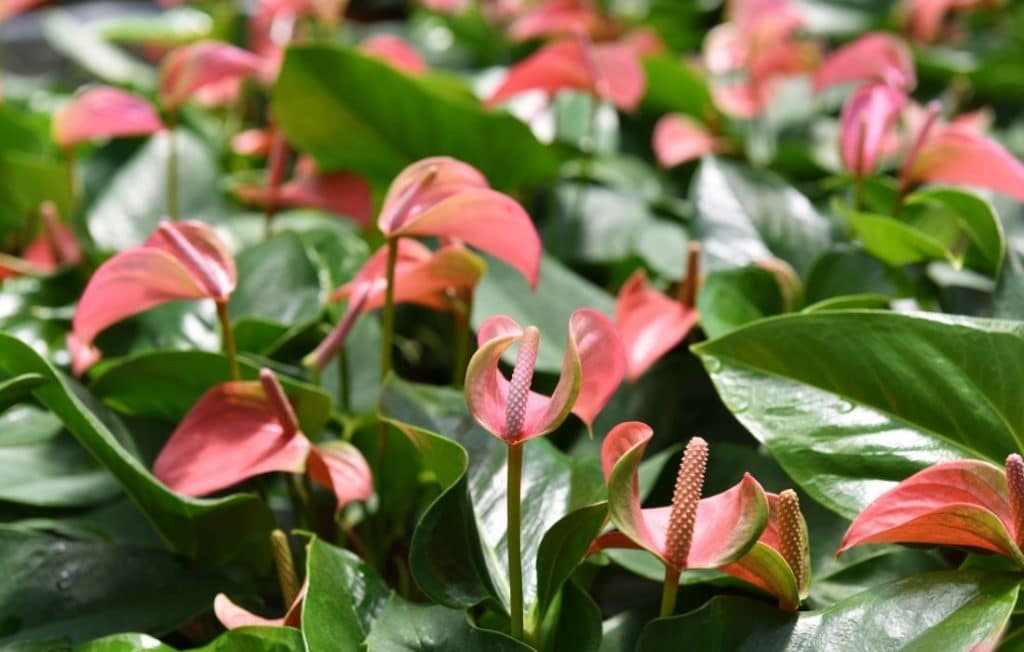
Anthuriums, with their striking red, pink, or white flowers, are native to tropical rainforests. They have received the Royal Horticultural Society’s Award of Garden Merit, underscoring their appeal and resilience. Moreover, studies by the Associated Landscape Contractors of America and NASA have demonstrated that anthuriums have high air-cleaning capacities, making them an excellent choice for indoor environments.
Basic Information
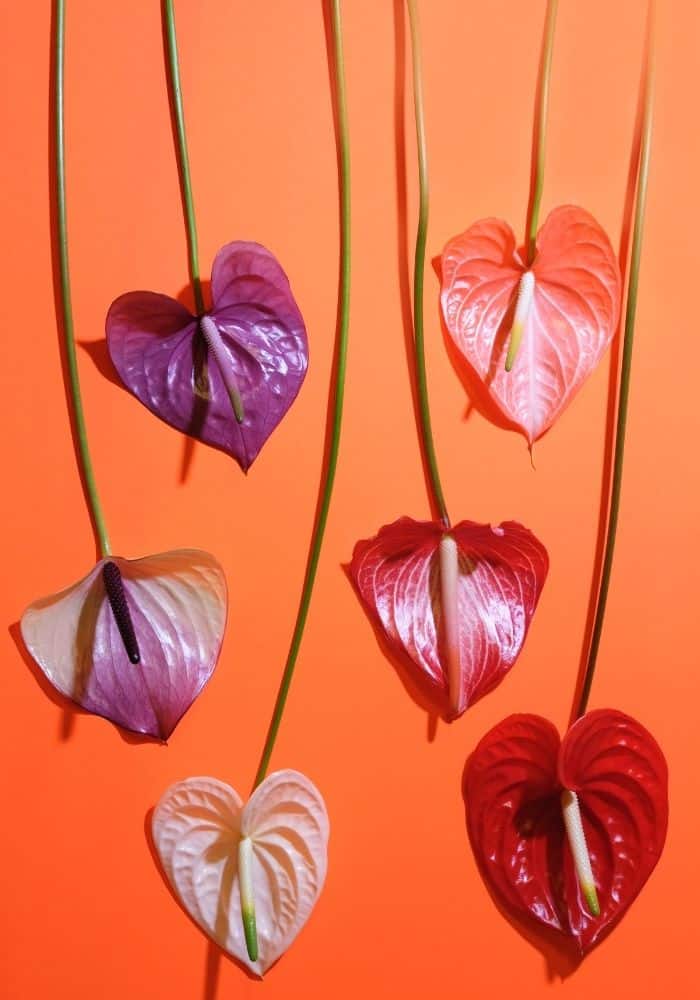
- Botanical Name: Anthurium andraeanum
- Common Names: Tailflower, Flamingo Flower, Painter’s Palette, Laceleaf
- Origin: Tropical rainforests
- Size: 4-20 inches in height and diameter
- Toxicity: Contains saponin and calcium oxalate crystals, which can irritate sensitive skin. Keep away from pets and children.
Light Requirements
Understanding the light needs is crucial for Anthurium care. They thrive in bright, indirect light. Direct sunlight can scorch their leaves, leading to burns. In low light, they may become leggy, with faded leaves and weak growth. Position your anthurium in a well-lit spot but shield it from direct sun to maintain its vibrant appearance. This aspect of Anthurium care is essential for their lush growth.
Watering Needs
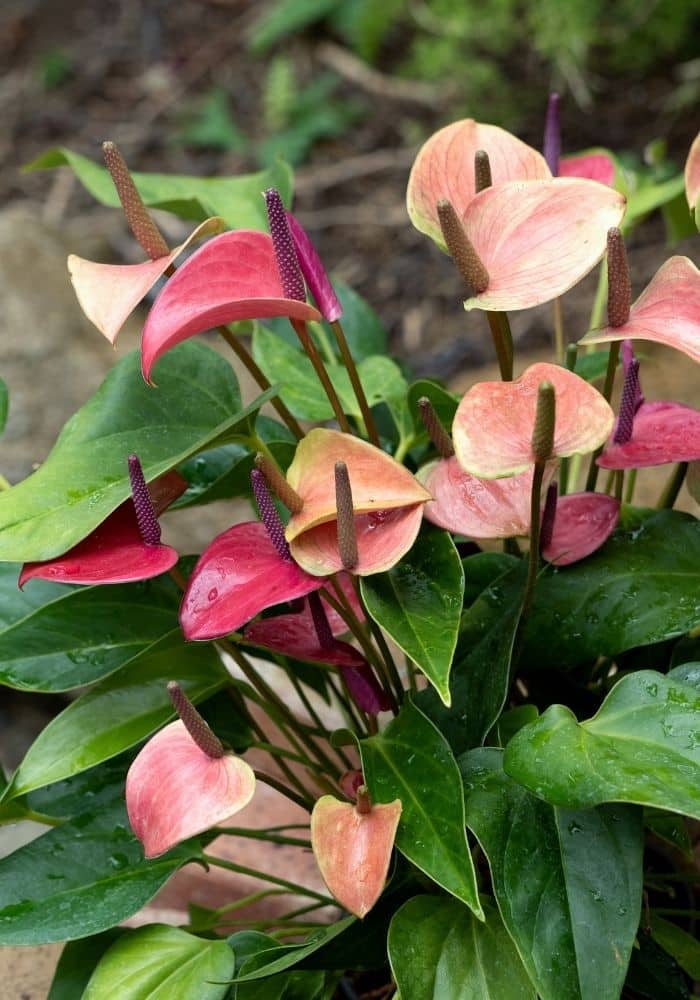
Watering is a key aspect of Anthurium care. These plants prefer high humidity but dislike being waterlogged. Keep the soil consistently moist but not soggy. Use room-temperature water free from lime and chlorine. Mist the leaves regularly, but avoid spraying the flowers to prevent spotting. Remove excess water from the pot to avoid root rot. Proper watering is fundamental to successful Anthurium care.
Temperature and Humidity
Anthuriums prefer stable temperatures between 10-15°C (50-59°F). Avoid sudden temperature changes and cold drafts. High humidity, around 80%, is ideal. In dry environments, use a humidifier or place a tray of water near the plant to increase humidity. This aspect of Anthurium care is crucial for maintaining their vibrant growth and health.
Soil and Potting

Choosing the right soil is vital for Anthurium care. These plants require well-draining, aerated soil. A mix containing organic-rich garden soil, sand, perlite, and peat works well. Repot every 2-3 years in March or April, using a slightly larger pot to accommodate growth. Proper soil and potting contribute significantly to effective Anthurium care.
Fertilization
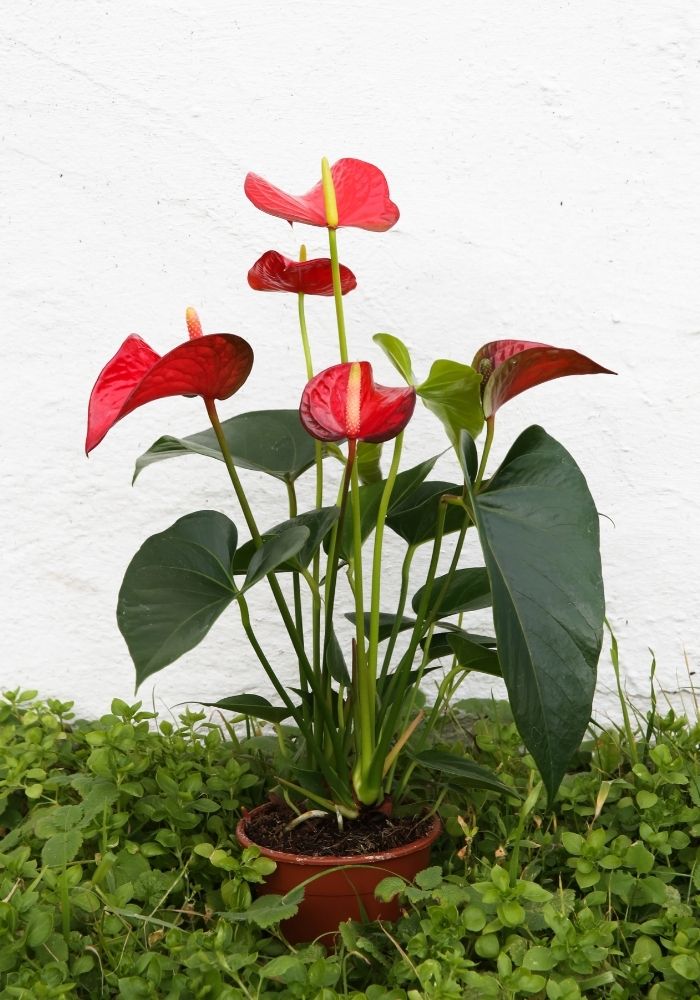
Fertilization is an important part of Anthurium care. Fertilize sparingly with a phosphorus-rich fertilizer (5-10-5) from March to September to boost flowering. Over-fertilizing can cause yellowing leaves. Consider using natural fertilizers like citrus peel water to nourish your plant. Regular yet careful fertilization enhances Anthurium care.
Pruning and Propagation
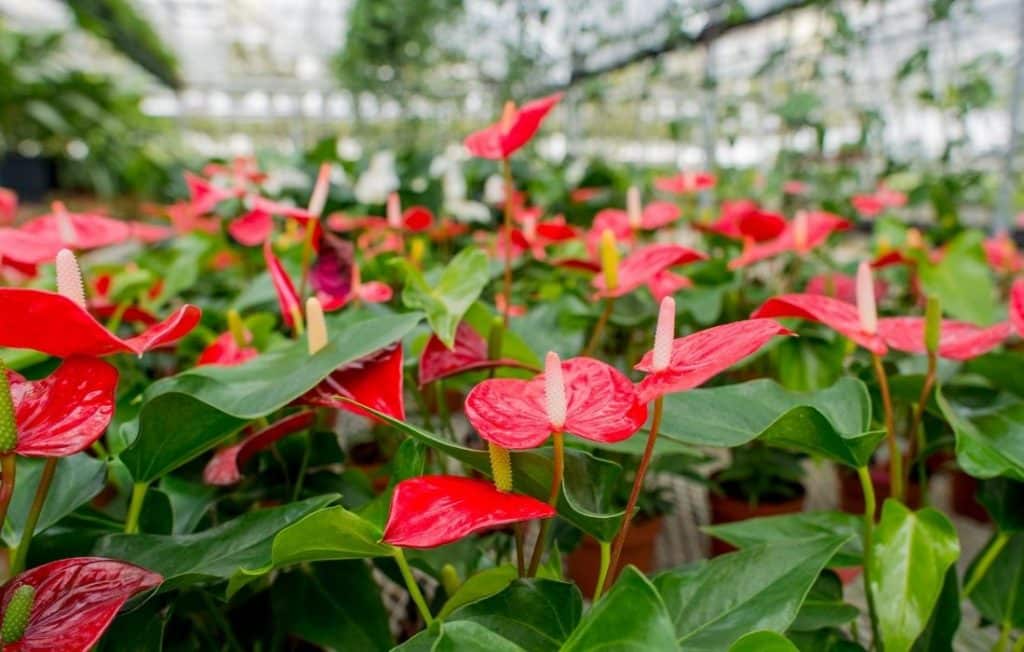
Pruning and propagation are key practices in Anthurium care. Prune only to remove dead or yellowing leaves and spent flowers. Propagation can be done by seeds, which germinate at 24-27°C (75-80°F), or by dividing the plant during repotting. Ensure new sections have roots and plant them in separate pots. These practices are essential for maintaining healthy growth in Anthurium care.
Common Diseases and Pests
Anthuriums can suffer from several diseases and pests. Here’s how to manage them effectively as part of your Anthurium care routine:
- Septoria Spot: Caused by high humidity, this fungus creates yellow-brown spots. Use fungicides like Bordeaux mixture to treat it.
- Anthracosis: Appears as black mold spots due to high pH and moisture. Apply appropriate fungicides for recovery.
- Fusarium Wilt: Causes wilting and yellowing. Remove affected parts and treat with copper-based fungicides.
- Chlorosis: Results from magnesium and iron deficiency. Correct soil nutrients to prevent it.
- Rust: Often due to excessive leaf-shining aerosols. Reduce their use.
Common pests include aphids, thrips, scale insects, and spider mites. Control them with insecticidal soap or neem oil. Managing diseases and pests is a critical component of Anthurium care.
Additional Tips for Anthurium Care
Positioning

Position your anthurium away from drafts and heating vents. This simple step can make a significant difference in Anthurium care, preventing stress and damage.
Cleaning
Regularly wipe leaves with a damp cloth to remove dust and enhance photosynthesis. This practice not only keeps your plant looking fresh but also supports its overall health.
Observation
Regularly check for signs of stress, such as yellowing leaves or stunted growth, and adjust care accordingly. Being attentive is a crucial part of Anthurium care, ensuring your plant remains vibrant and healthy.
Conclusion
Caring for anthuriums involves understanding their tropical origins and mimicking those conditions indoors. By providing the right light, moisture, temperature, and nutrients, your anthurium can flourish, adding color and life to your home. With proper Anthurium care, you can enjoy these beautiful plants for years to come.
By following this comprehensive guide on Anthurium care, you’ll ensure your plant remains healthy and vibrant, making it a standout feature in your indoor garden. Whether you’re a seasoned plant enthusiast or a beginner, embracing these practices will lead to a thriving anthurium that enhances your living space with its stunning beauty.
For more detailed information about the Anthurium plant, our article titled “Why Is Anthurium Popular Among Plant Lovers?” is for you.






One comment
Pingback: SUGGESTIONS OF THE BEDROOM PLANTS - Easy Landscape Architecture